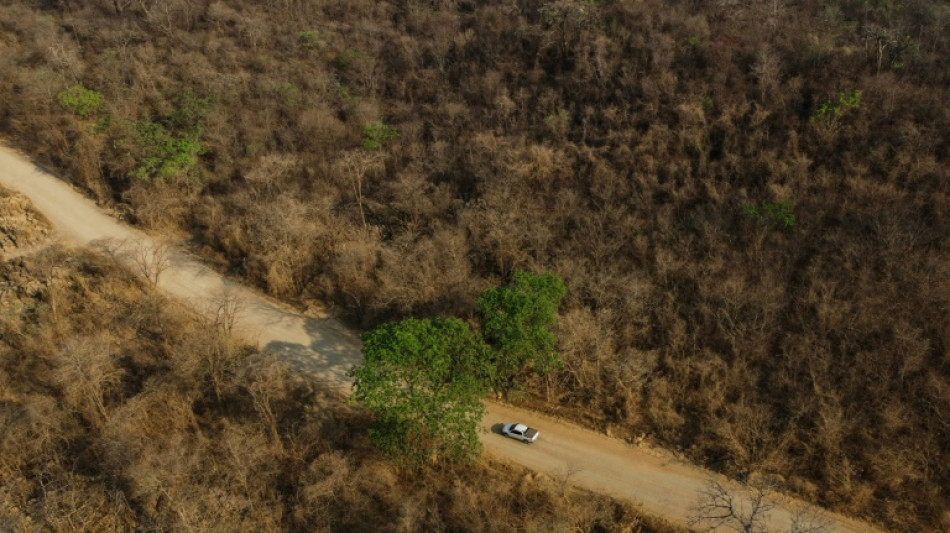
-
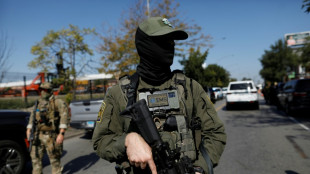 Trump administration declares US cities war zones
Trump administration declares US cities war zones
-
Bad Bunny takes aim at Super Bowl backlash in 'SNL' host gig

-
 El Khannouss fires Stuttgart into Bundesliga top four
El Khannouss fires Stuttgart into Bundesliga top four
-
Insatiable Pogacar romps to European title

-
 Newcastle inflict more pain on Postecoglou, Everton end Palace's unbeaten run
Newcastle inflict more pain on Postecoglou, Everton end Palace's unbeaten run
-
Daryz wins Prix de l'Arc de Triomphe thriller

-
 Russell wins Singapore GP as McLaren seal constructors' title
Russell wins Singapore GP as McLaren seal constructors' title
-
Landslides and floods kill 64 in Nepal, India

-
 Russell wins Singapore GP, McLaren seal constructors' title
Russell wins Singapore GP, McLaren seal constructors' title
-
Djokovic 'hangs by rope' before battling into Shanghai last 16

-
 Erasmus proud of Boks' title triumph as Rugby Championship faces uncertain future
Erasmus proud of Boks' title triumph as Rugby Championship faces uncertain future
-
French PM under pressure to put together cabinet

-
 US Open finalist Anisimova beats Noskova to win Beijing title
US Open finalist Anisimova beats Noskova to win Beijing title
-
Hamas calls for swift hostage-prisoner swap as talks set to begin
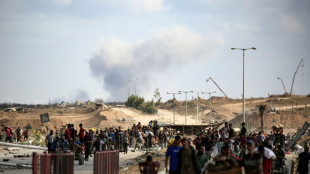
-
 Opec+ plus to raise oil production by 137,000 barrels a day in November
Opec+ plus to raise oil production by 137,000 barrels a day in November
-
Death toll from Indonesia school collapse rises to 45

-
 Brisbane Broncos edge Storm in thrilling NRL grand final
Brisbane Broncos edge Storm in thrilling NRL grand final
-
Refreshed Sabalenka 'ready to go' after post-US Open break

-
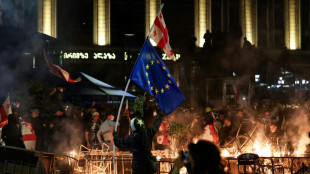 Georgia PM vows sweeping crackdown after 'foiled coup'
Georgia PM vows sweeping crackdown after 'foiled coup'
-
Landslides and floods kill 63 in Nepal, India

-
 No handshakes again as India, Pakistan meet at Women's World Cup
No handshakes again as India, Pakistan meet at Women's World Cup
-
Georgia PM announces sweeping crackdown on opposition after 'foiled coup'
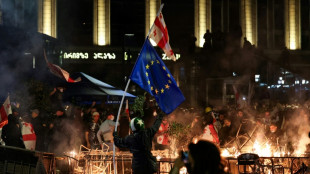
-
 Syria selects members of first post-Assad parliament
Syria selects members of first post-Assad parliament
-
Russian strikes kill five in Ukraine, cause power outages
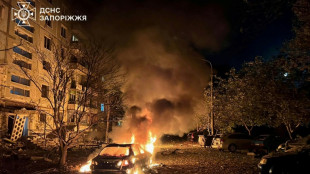
-
 World champion Marquez crashes out of Indonesia MotoGP
World champion Marquez crashes out of Indonesia MotoGP
-
Babis to meet Czech president after party tops parliamentary vote

-
 Death toll from Indonesia school collapse rises to 37
Death toll from Indonesia school collapse rises to 37
-
OPEC+ meets with future oil production hanging in the balance

-
 Dodgers down Phillies on Hernandez homer in MLB playoff series opener
Dodgers down Phillies on Hernandez homer in MLB playoff series opener
-
Philadelphia down NYCFC to clinch MLS Supporters Shield

-
 Syria selects members of first post-Assad parliament in contested process
Syria selects members of first post-Assad parliament in contested process
-
Americans, Canadians unite in battling 'eating machine' carp
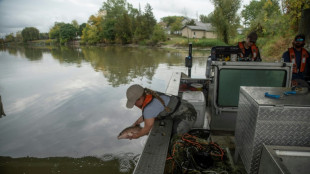
-
 Negotiators due in Cairo for Gaza ceasefire, hostage release talks
Negotiators due in Cairo for Gaza ceasefire, hostage release talks
-
Trump authorizes troops to Chicago as judge blocks Portland deployment

-
 Wallabies left ruing missed chances ahead of European tour
Wallabies left ruing missed chances ahead of European tour
-
Higgo stretches PGA Tour lead in Mississippi

-
 Blue Jays pummel Yankees 10-1 in MLB playoff series opener
Blue Jays pummel Yankees 10-1 in MLB playoff series opener
-
Georgia ruling party wins local polls as mass protests flare

-
 Depoortere stakes France claim as Bordeaux-Begles stumble past Lyon
Depoortere stakes France claim as Bordeaux-Begles stumble past Lyon
-
Vinicius double helps Real Madrid beat Villarreal

-
 New museum examines family life of Mexican artist Frida Kahlo
New museum examines family life of Mexican artist Frida Kahlo
-
Piccioli sets new Balenciaga beat, with support from Meghan Markle

-
 Lammens must be ready for 'massive' Man Utd scrutiny, says Amorim
Lammens must be ready for 'massive' Man Utd scrutiny, says Amorim
-
Arteta 'not positive' after Odegaard sets unwanted injury record

-
 Slot struggles to solve Liverpool problems after third successive loss
Slot struggles to solve Liverpool problems after third successive loss
-
Netanyahu hopes to bring Gaza hostages home within days as negotiators head to Cairo
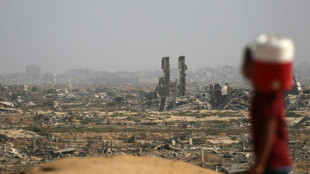
-
 Ex-NFL QB Sanchez in hospital after reported stabbing
Ex-NFL QB Sanchez in hospital after reported stabbing
-
Liverpool lose again at Chelsea, Arsenal go top of Premier League

-
 Liverpool suffer third successive loss as Estevao strikes late for Chelsea
Liverpool suffer third successive loss as Estevao strikes late for Chelsea
-
Diaz dazzles early and Kane strikes again as Bayern beat Frankfurt


Green shoots spring from ashes in Brazil's fire-resistant savanna
The huge wildfires that ripped through Brazil recently did not spare its vast tropical savanna, but green shoots are already emerging from the ashes there, proof of the vast grasslands' rare gift for fire resistance.
The Cerrado, the most species-rich savanna in the world, covers some two million square kilometers of land (770,000 square miles) in central Brazil -- nearly one-fifth of the country's entire surface area.
In Brasilia National Park, on the outskirts of the nation's capital, blackened soil and charred tree trunks stand testimony to the ferocity of a fire that ripped through 1,470 hectares (3,600 acres) of land in September.
Brazil was then in the throes of a record drought -- the city of Brasilia had gone 169 days without a drop of rain -- which lit the torch under the worst wildfire season in over a decade, blamed by experts at least partly on climate change.
But the Cerrado, which is less well-known than the neighboring Amazon and Pantanal wetlands, has a superpower: over millions of years, it has developed some resistance to flames and high temperatures.
- Upside-down forest -
"The Cerrado is an inverted forest. We see only a fraction of it because the forest is all under our feet," said Keiko Pellizzaro, an environmental analyst at the Chico Mendes Institute for Biodiversity Conservation, a government agency.
The Cerrado's deep root system acts like a "pump," sucking up groundwater "even during extreme drought," she said.
Meanwhile, above ground the trees' thick bark and the shells of the fruit act as "thermal insulators," said Isabel Schmidt, professor of ecology at the University of Brasilia.
Even if temperatures reach up to 800 centigrade (1,470 Fahrenheit), the vegetation can survive "as if it were just another hot day," she said.
A month after the recent fires, the first rains saw grass and small plants quickly beginning to grow, and new leaves sprouted on charred trees in Brasilia National Park.
"Even if it hadn't rained, we would have seen some resilience," Pellizzaro said.
"I'm amazed by its capacity for regeneration," said Priscila Erthal Risi, a 48-year-old volunteer who took part in an operation by the Chico Mendes Institute to replant the reserve with native species such as donkey's tail and Magonia pubescens trees.
- Tested to the limit -
Brazilian police are still investigating the cause of the fire in Brasilia National Park.
Most wildfires in Brazil are started by farmers or agribusiness workers to clear land for cattle grazing or crops.
Schmidt said the Cerrado's vegetation had always survived sporadic fires caused by lightning strikes during the rainy season.
But she warned that if extreme droughts become more frequent the biome's resilience could be tested.
"The resistance that plants and animals have to any type of fire was developed over millions of years, but climate change has taken place in a matter of decades. No organism can adapt that quickly," she said.
- 'Cradle of waters' at risk -
The Cerrado is crucial not only for the survival of the thousands of species that call it home but for the water supply of a large part of South America.
The so-called "cradle of waters" is home to the sources of some of the continent's biggest rivers and aquifers.
But its role as a continental spring is endangered.
With the rainy season starting later and later each year and the amount of rain declining by eight percent on average over the past three decades, the flow of the Cerrado's rivers has fallen by 15 percent.
If wildfires become more frequent, Schmidt warned, "many ecosystems that are more vulnerable to fire," including in the Cerrado, "will simply not survive."
B.Baumann--VB



